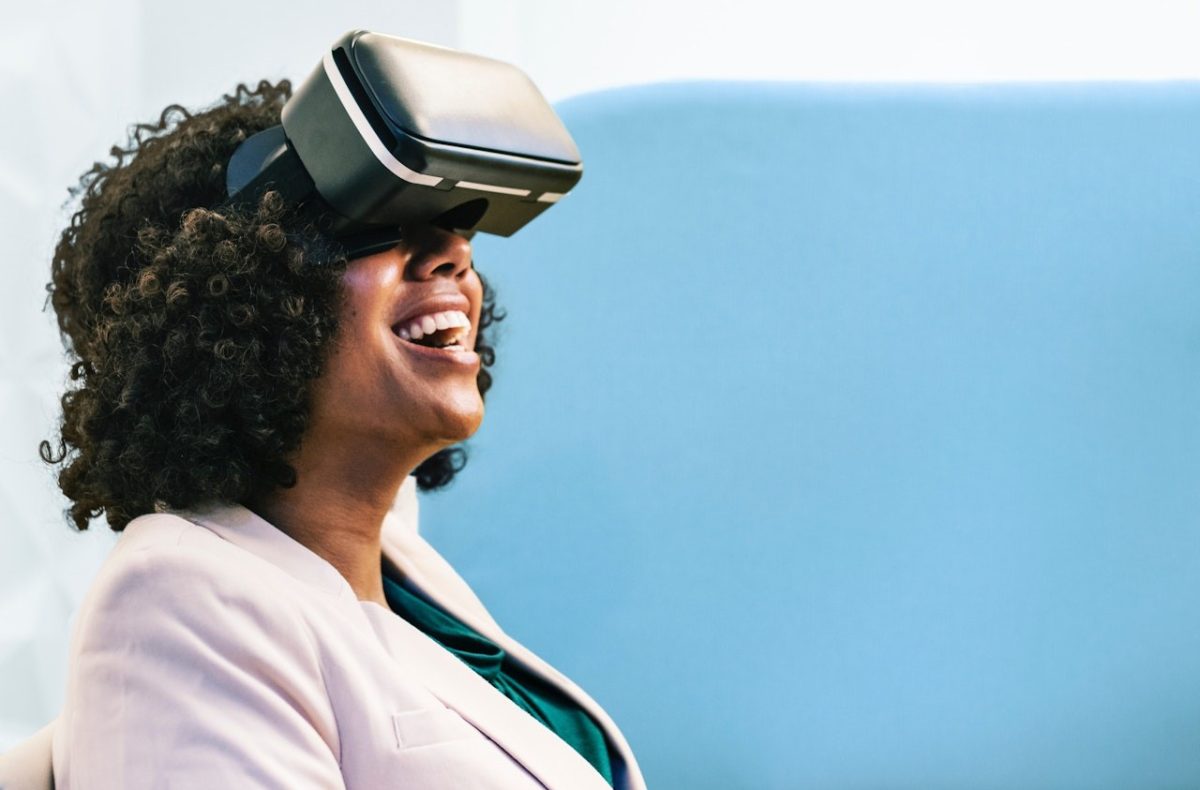As immersive technologies gain traction in further and higher education, Chris Creed looks at why it’s so important to consider accessibility of these environments at this emergent stage. Learn more from Chris at TechAbility in Birmingham on 16th November 2022.
About Me
I am a Professor of Human-Computer Interaction at Birmingham City University (BCU) where I lead the Human-Computer Interaction Research Group based within the DMT Lab. My core research interest is around the design and development of assistive technology for disabled people (across a range of impairments). I’m currently leading a range of research projects focused around accessibility such as:
- investigating new interface techniques for facilitating creative visual design work via gaze/speech interaction, supported through an Adobe Fund for Design grant
- exploring the development of inclusive AR/VR experiences, funded by a Meta/Facebook research award
- making coding more accessible for people with physical impairments, which has received support from a Google Inclusion Research Award and a Microsoft AI for Accessibility grant
- and investigating the potential of wearable technology to support young people with special needs (e.g. ADHD) within residential care, funded through Innovate UK
About the project
Augmented and virtual reality (AR/VR) hold significant potential to transform educational practice for learners at all levels through future collaborative platforms such as the Metaverse and other immersive experiences.
These technologies present new opportunities to support inclusive learning environments for disabled students who may currently experience substantial barriers that limit or exclude participation in mainstream or tailored educational experiences.
AR and VR also offer opportunities around designing adaptive and personalised experiences for educational purposes which can be accessed from a variety of locations (e.g. immersive home classrooms).
However, there has been a lack of research to date investigating the challenges these technologies may present for disabled people who experience physical, visual, hearing, and cognitive impairments. For instance, initial research within the field has started to identify some of the barriers and issues that people with physical impairments experience when using VR which can make it particularly challenging (or impossible) for individuals to utilise immersive experiences.
Whilst this and other work has highlighted some of the accessibility limitations with AR and VR, further research is required to comprehensively understand and map out these challenges across a wider spectrum of impairments and immersive technologies/experiences. This is particularly urgent given recent projections around the significant future proliferation of AR/VR across the wider population (e.g. evidenced through recent sales of commercial products such as the Meta Quest 2).
If accessibility barriers persist across future iterations of the technology, it will contribute towards a further widening of the digital divide for marginalised groups thus leading to exclusion from future mainstream platforms. To address these concerns, we are investigating existing barriers within AR/VR technologies with a view to developing a research agenda for the wider community highlighting areas where additional work is required to overcome the accessibility challenges identified.
Methodology
We recently led four multidisciplinary sandpits, funded through a research grant from Meta Reality Labs, with international experts and key stakeholders including disabled people, academics specialising in HCI and/or AR/VR, industry experts, assistive technologists, and representatives from national charities and special needs colleges/schools.
The focus of the first two sandpits was on identifying and mapping out the key barriers that people with a range of impairments experience when using AR/VR devices and platforms. These were identified through a combination of people with lived experience of disability sharing their perspectives, alongside other stakeholders highlighting and discussing accessibility challenges with immersive technologies.
All points raised by participants were collated with 65 accessibility barriers identified – examples include entry level challenges (e.g. lack of inclusive features and financial affordability), limited controls and measures to protect vulnerable user groups, usability challenges (e.g. around customisation of experiences and utilising controllers requiring dexterous movements), lack of compatibility with existing accessibility aids, and limited disability representation within virtual environments (e.g. in terms of utilising disabled avatars).
The barriers were presented to attendees at a third sandpit where the emphasis was on discussing research opportunities and solutions that could help to mitigate the barriers identified. A total of 112 themes were highlighted by participants including areas associated with software usability (e.g. exploring accessible menus for people with visual impairments), hardware challenges (e.g. investigating non-conventional approaches toward headset design), as well as ethical and wider considerations (e.g. pushing for laws that mandate manufacturers of headsets to comply with accessibility standards and regulations).
The research themes highlighted by participants were used to inform a draft research agenda which we presented to participants in a final fourth sandpit to confirm that all views were appropriately captured and to provide an opportunity for any additional points to be integrated or refined.
We typically had between 22-38 attendees at each sandpit where participants were provided with a £250 gift card for their time and contribution.
Get involved
We have now completed the analysis across all four sandpits and will shortly be submitting the research agenda to an international journal, which will enable us to share the results with the wider community.
Additionally, we are currently developing a web presence around the project where we intend to share all findings resulting from the research.
We are also working towards addressing the research areas identified via the sandpits and are actively exploring new collaborative opportunities e.g. in terms of research projects, funding bids, etc.
Please get in touch (chris.creed@bcu.ac.uk) if you’d like further details about the project or if you are potentially interested in discussing potential future collaboration.
Image by rawpixel.com on Nappy

